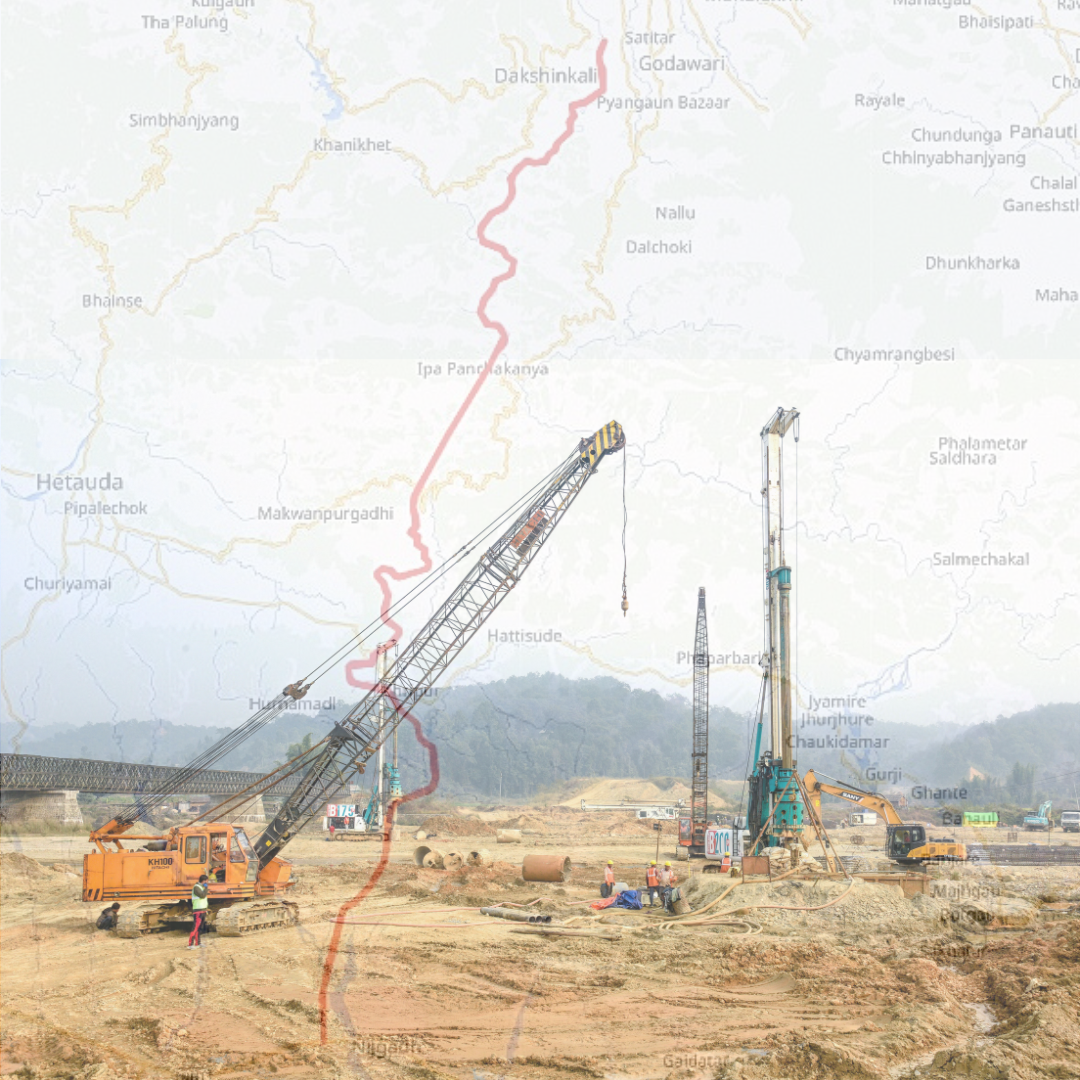Nepal Army | Physical development | Progress update | Travel time reduction | Outer ring-road

The Kathmandu–Terai/Madhes Fast Track project, a national pride mega highway project that will connect the Capital city to Nijgadh of Bara district in Madhes Province, has seen little progress over the six years of its development period.
Reportedly, 25% of progress is achieved in physical development and 28.11% in financial expenditure as of now. Physical progress accounted for 21.73% of the work while financial progress stood below 21% until January 2023, according to the Nepal Army update.
The project was initially set to be completed by 2021 but preparation delays, indecision over the endorsement of the detailed project report (DPR), and the pandemic led to postponing the deadline to 2024. Further delays have now prompted an extension to April 2027.
Revered as a strategically important project, the 72.5 km mega highway will ease freight mobility from the Indian town of Raxaul via the country’s major custom metropolitan — Birgunj, and shorten the distance between Kathmandu and Nijgadh by 193 km, cut fuel consumption, and save travelling time by more than four hours.
The highway will run along the Bagmati corridor originating in Sano Khokana and travels through Chhaimale, Gausel, Malta, and Thingen, and cross through a tunnel to run through the southern valleys that form the catchments of the Bakiya River reaching Chhatiwan and then to Nijghad at which it meets with the Mahendra Highway, says the project website.
Considering the slow pace of construction, it is feared that the project will meet its 2027 deadline, and perhaps see a further rise in the project costs, raising concerns about the project’s economic viability against rising financial costs, a problem that Nepal experiences with most of its ambitious hard infrastructure projects.
Earlier, the project was awarded to an Indian consortium of Infrastructure Leasing and Financial Services (IL&FS) Transportation Networks, IL&FS Engineering and Construction, and Suryavir Infrastructure Construction. The signing of the MoU took place in February 2015.
After IL&FS sought a fixed annual Minimum Revenue Guarantee (MRG) of $150 million from the project, where the government would be obligated to pay the shortfall between the revenue generated and the MRG, controversy erupted over the model and overall financial worthiness of the project. After a writ petition was filed at the Supreme Court in October 2015, the court stayed the award.
Citing concerns over national interest and financial risk, the government cancelled the agreement in 2016 and delegated the project to the Nepal Army in May 2017 after deciding to develop the project by itself mobilising domestic resources.
Soosung Engineering, a South Korea-based engineering consulting firm, then prepared the project’s DPR estimating the project cost to be Rs 175.2 billion with a possibility of cost overrun to Rs 213 billion. The DPR was approved in August 2019 after six months of government indecision.
One of the major issues with the project lies in the land acquisition at Khokana, the entry point of the highway, which is also an ancient Newa settlement. Residents fear that planned and currently ongoing multiple projects will displace them, encroach on their ancestral lands, and endanger their cultural heritage, livelihood, and indigenous identity.
Along with the highway, physical infrastructure projects such as the outer ring road, Bagmati corridor, transmission line, and smart city are other projects that encompass the Khokana region.
Read More Stories
Kathmandu’s decay: From glorious past to ominous future
Kathmandu: The legend and the legacy Legend about Kathmandus evolution holds that the...
Kathmandu - A crumbling valley!
Valleys and cities should be young, vibrant, inspiring and full of hopes with...
Consumer Court rulings spark nationwide doctors’ strike
Doctors across Nepal suspended all non-emergency medical services on Monday in protest against...